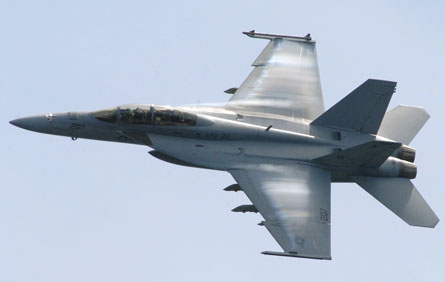Australia's newly elected Labor government is to review the country's air power capability, in a controversial move that could see the previous administration's A$6.6 billion ($5.8 billion) order for 24 Boeing F/A-18F Super Hornets dumped, and the planned purchase of up to 100 Lockheed Martin F-35 Joint Strike Fighters also face a fresh assessment.
Australia became the first export customer for the Super Hornet (US Navy F/A-18F pictured below) last March, with its two-seat fighters scheduled for delivery from 2010 as replacements for the Royal Australian Air Force's General Dynamics F-111s. The aircraft are also intended to provide a stop-gap capability until the planned introduction of Australia's JSFs from 2013 at the earliest.
 |
|---|
© US Navy |
The F/A-18F deal drew considerable opposition at the time, with claims that the then-defence minister and now opposition leader Brendan Nelson rejected expert advice before advancing with the order. Critics say the procurement was also conducted without strategic justification or comparative analysis, and insist it would be cheaper to extend the F-111's service life, or replace the Super Hornet and JSF purchases with an order for Lockheed's F-22 Raptor. However, one industry source notes that US Congress has so far blocked Japan's requests to buy the F-22, and says development of an export variant could cost up to $1 billion.
Australia's new defence minister Joel Fitzgibbon will launch a thorough review of the previous government's military spending as soon as possible, with this to include an examination of the RAAF's air combat options. He has also committed to develop a new defence policy White Paper to provide strategic guidance for capability and force structure planning.
Boeing declines to comment on speculation about the Super Hornet deal's possible cancellation, or on reports citing a possible $300 million charge for terminating the deal. "We are under contract, and the Australian aircraft are already in the production process," the company adds.
Additional reporting by Craig Hoyle in London
Source: Flight International
















